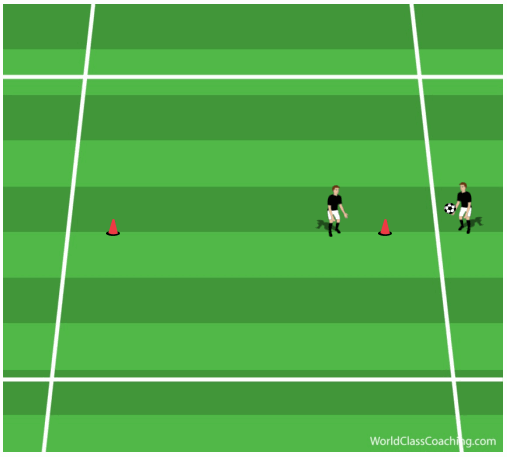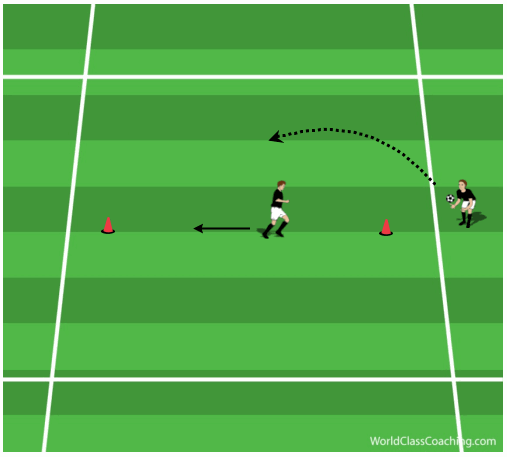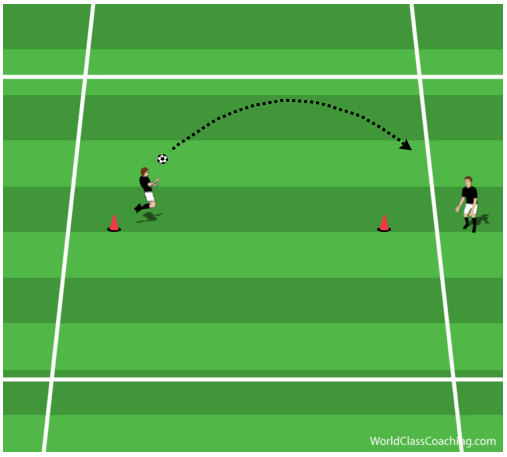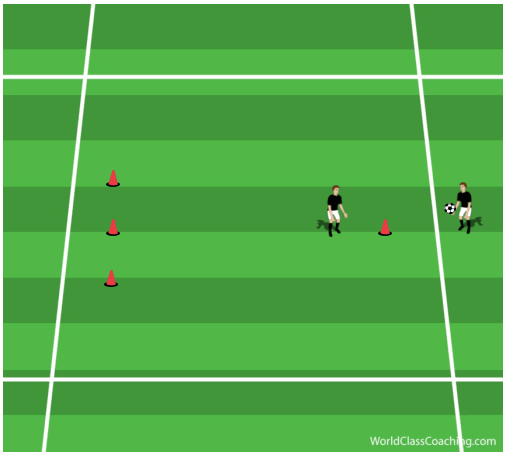By Justin Cresser
In my time of coaching, I have seen many goals that occur from poor defensive clearances, and in particular, poor defensive headers. Players either mistime the jump, don’t get high enough while jumping, or use poor technique.
This is exercise emphasizes rapid backpedalling and jumping ability, as well as defensive heading technique. It mimics game situations in which balls are lofted in behind a player, and is essential especially for centre-backs, who perform several headers per game while backpedaling or backtracking.
Set up two cones 10 yards apart in a straight line. Designate one cone as the starting cone. Divide your players into pairs and have one player stand in between the two cones, but 2 yards away from the starting cone, facing their partner who is standing behind the starting cone with a ball in their hands (Figure 1).
Play is initiated by having the player in between the cones accelerate towards and touch the starting cone and then immediately backpedal (at speed) towards the cone 10 yards behind them. As they are backpedaling, their partner should toss a ball up and slightly behind them (Figure 2) that they must return with a jumping header (Figure 3). Note: a good toss is important for this activity to be successful.
After each header, have the player walk balk to the starting point (~ 10 seconds) and then repeat. After 6 to 8 repetitions, have the players switch roles. You can progress this exercise by having the backpedaling player head to a third player to the left or right of the player tossing the ball.
You can also add a reactive component to this exercise by placing a cone 2 yards to the left and right of the cone behind the backpedaling player (Figure 4). The player with the ball will call either ‘right’, ‘left’ or ‘centre’ to which their partner must respond to accordingly.
Coaching Points:
- When backpedaling, your players should use short, quick steps. Their centre of gravity should be kept low and in front of them by leaning forward slightly.
- Timing of the jump is crucial. They must judge the flight of the ball while backpedaling. As they are about to jump, they should shorten their steps to decelerate
- When jumping, the feet should be together and they should use a counter movement (squatting down) and swing both arms back to generate power.
- Transitioning from backpedaling to jumping must be quick and fluid.
- When in the air, they must arch their back and drive the torso forward to generate power for the header.
- Players should attempt to head through the bottom half of the ball, which gives them height and distance .
Justin Cresser - Has coached soccer at various levels both in North America and abroad (Hong Kong and Africa). His most recent position was as the Assistant Technical Director at the Soccer Club of Toronto. He has his National Diploma from the NSCAA and is also a certified strength and conditioning coach.






